Top-Rated Attractions & Things to Do in Charlottesville, VA
Located in the very heart of central Virginia’s Piedmont region, historic Charlottesville offers tourists active adventures along the Blue Ridge Mountains, as well as scenic gardens, renowned Neoclassical architecture, great museums, and art installations such as IX Art Park, as well as numerous important Civil War sites. Along the way, you’ll discover one of the longest pedestrian malls in the USA, the Downtown Mall, a brick-paved people-friendly thoroughfare covering eight blocks of boutique shops and restaurants.
This thriving university town, set in what Thomas Jefferson referred to as the “Eden of the United States,” welcomes visitors with family-friendly activities, warm hospitality, and meandering mountain drives, where the journey is the destination.
To get the most out of your sightseeing here, be sure to check out our list of the top-rated attractions and things to do in Charlottesville, Virginia.
Note: Some businesses may be temporarily closed due to recent global health and safety issues.
1. Thomas Jefferson’s Monticello
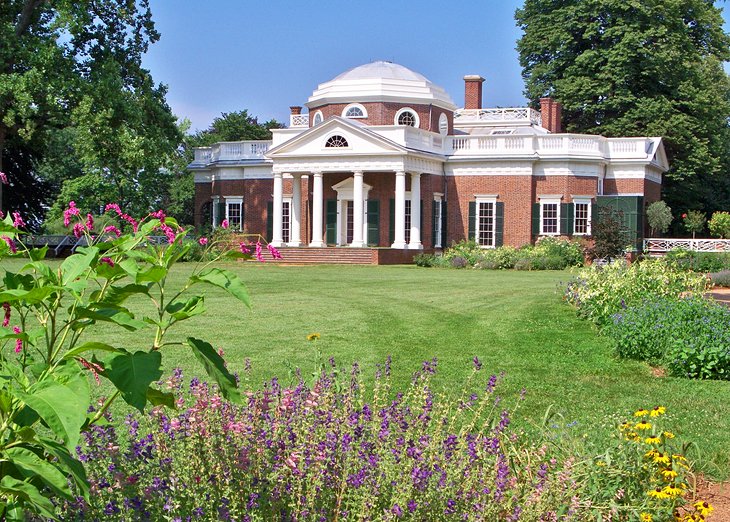
Jefferson chose the “little mountain” of Monticello as home for his expansive plantation, working farm, and homestead upon completing his term as the third President of the United States. Today a UNESCO World Heritage Site, Monticello tops must-see places to visit lists for good reason: the site houses thousands of artifacts and rare Jefferson ephemera.
Guided tours of his home and grounds allow up-close inspection of his papers, books, and furniture. Take special note of the period polygraph letter copying machine in his study, a device Jefferson called “the finest invention of the present age.”
Monticello offers a variety of different tour options. House and garden tours provide a comprehensive look into daily life here, and historical accuracy finds Monticello tackling challenging issues head on, such as Jefferson’s use of slaves.
Visitors should make time to explore Mulberry Row in order to more fully appreciate slave conditions in existence at the time. Slave living quarters and the industrial hub of the plantation are at the “Row,” and special “Slavery at Monticello” tours are also available. It’s best to avoid large crowds by scheduling visits late in the day.
Address: 931 Thomas Jefferson Pkwy, Charlottesville, Virginia
Official site: www.monticello.org
2. University of Virginia
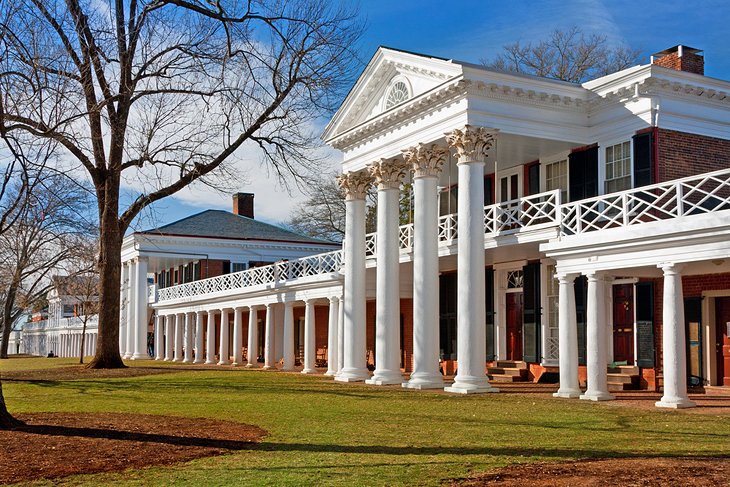
The University of Virginia (UVA) is the cornerstone of Thomas Jefferson’s legacy and lifelong commitment to education, and the grounds and Neoclassical architecture trace back to his intimate plans.
The university provides free daily tours of the grounds while classes are in session. The hour-long tours, led by student volunteers, begin in the Rotunda, the center of Jefferson’s “Academical Village,” the core of the university’s original campus. Modeled upon the Roman second-century Pantheon, the Rotunda has served as the iconic symbol of the university since its construction in 1826.
Visitors can stroll along the arcades and corridors on the Lawn, the enormous grassy courtyard surrounded by 10 pavilions housing both students and faculty.
Several UVA gardens are easily accessed when touring the campus. Gardens along the east and west pavilions incorporate intricate geometric designs; ornate boxwood patterns; and native trees, shrubs, and plantings favored by Jefferson. Pavilion Garden X, in the east pavilion, is one of the largest at more than 150 feet wide — the large oval design with “elephant ears” was based upon a Jefferson plan for a similar garden at Monticello.
Also worth visiting, if you have time, are the Fralin Museum of Art; Kluge-Ruhe Aboriginal Art Collection of UVA, with its large collection of Australian Aboriginal artworks; and the McCormick Observatory, which offers regular night programs for the public.
Official site: www.uvaguides.org
3. Historic Civil War Sites
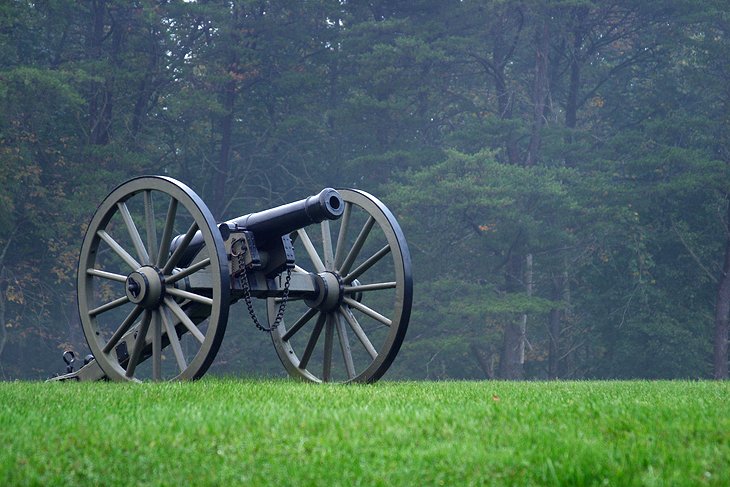
Central Virginia figured prominently in a number of key battles and historically significant actions during the Civil War. Just 50 miles from Charlottesville, tourists can explore Appomattox Court House National Historic Park, the site of the surrender of Robert E. Lee (General of the Army of Northern Virginia) to Ulysses S. Grant. The park includes a period recreation of the small village found in the mid-1800s, architectural walking tours, and the Appomattox County Historical Museum.
The Exchange Hotel Civil War Medical Museum in nearby Gordonsville provides visitors with the remarkable history of this property as a Civil War Receiving Hospital. Featuring numerous medical and Civil War artifacts, the building is the only surviving such hospital left standing in the state of Virginia.
Fredericksburg Battlefield is the site of one of the most devastating of all Civil War engagements. The Fredericksburg Battlefield Visitor Center houses two floors of memorabilia and artifacts that help tell the story of the “war between the states.” Look out for the actual drum carried into battle by the 28th Massachusetts Volunteer Regiment of the Irish Brigade.
Visitors can also learn about the Battle of Chancellorsville, only 12 miles south of Fredericksburg, where Stonewall Jackson lost his life to friendly fire in that fateful conflict.https://bd7a3f2003c51f91e867f54596913651.safeframe.googlesyndication.com/safeframe/1-0-38/html/container.html
4. Skyline Drive Scenic Highway in Shenandoah National Park
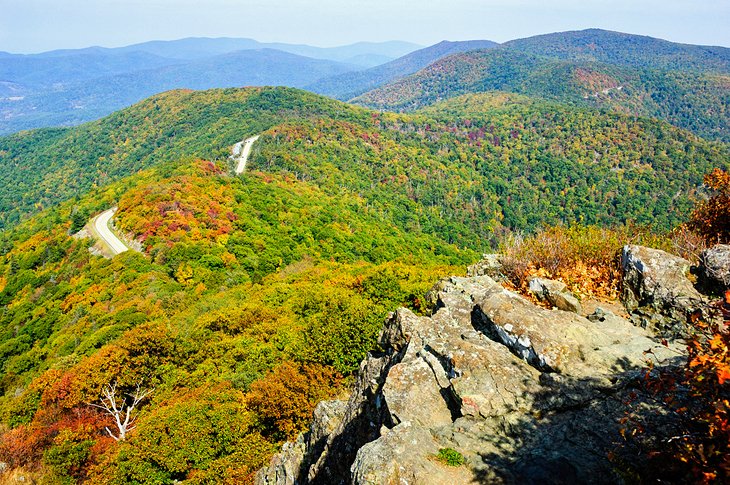
Skyline Drive is designated a National Scenic Byway and National Historic Landmark, listed in the Register of Historic Places. This legendary American drive is easily accessible from Charlottesville and offers one of the most scenic and enjoyable mountain rides in the country, no matter the season. A 105-mile linear road, Skyline Drive is less than 30 minutes from Charlottesville and accessed via the northern Parkway terminus at Interstate 64 and Skyline Drive.
Head north from the terminus near Waynesboro towards the fabled Blue Ridge Mountains, running virtually the entire length of Shenandoah National Park, where there are some fantastic hiking opportunities. Bring the camera and prepare for a relaxed pace as there are 75 lookouts along the route to Front Royal.
Plan at least three hours to traverse the entire length of the drive, but don’t be surprised if it takes longer as there are ample opportunities to stop, take photos, and enjoy the remarkable views of the Shenandoah Valley. Thorofare Mountain Overlook, at milepost 40.5, is a favored spot for early morning vistas.
Official site: https://visitskylinedrive.org
5. James Monroe’s Highland
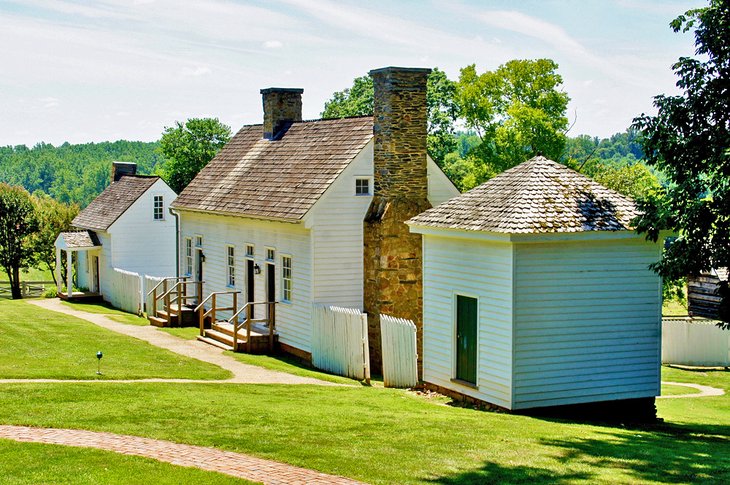
Highland, the plantation home of US President James Monroe from 1799 to 1823, is another important landmark that should be included on your Charlottesville travel itinerary. Located just minutes away from Thomas Jefferson’s Monticello, this extremely pretty property has been much preserved as it would have been in Monroe’s time. It’s now a working farm and museum.
A visit will enable you to explore a variety of buildings in addition to the main wood-sided abode, including a guesthouse dating from 1818, plus additions erected later that century, including a farmhouse.
Other notable features include reconstructions of an ice storage house, a smokehouse, an overseer’s cabin, plus slave quarters. Be sure to spend time walking the property’s trails for some of the most picturesque rural scenery anywhere in the state. Guided tours are available, and a stop in the museum shop is recommended.
Address: 2050 James Monroe Pkwy, Charlottesville, Virginia
Official site: https://highland.org